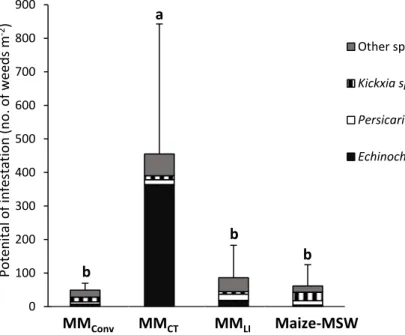Low-Input maize-based cropping systems implementing IWM match conventional maize monoculture productivity and weed control
Texte intégral
Figure




Documents relatifs
Modelling crop-weed canopies as a tool to optimise crop diversification in agroecological cropping systems. Nathalie Colbach, Floriane Colas, Stéphane Cordeau, Thibault
Decreasing herbicide use by contrasted cropping systems lead to various dynamics of weed communities Fabrice Dessaint, Dominique Meunier, Florence Strbik, François Dugué,
Potential of infestation (PI, see equation for details) detailed for the three main weed species (mean values over the 5-year period, 2011–2015) in the four cropping systems (MM Conv
Correlation between maize harvested grain yield (15% water content) and weed biomass assessed at maize maturity stage. The line corresponds to the regression line between
The specific objectives of this study are (i) to evaluate and compare the N 2 O fluxes emitted from soil for 1 year for four cropping systems (i.e., three integrated weed
Our main finding are the following : (1) promoting cropped plant–weed competition by manipulating cropped cover could greatly con- tribute to weed reduction ; (2) weed seed granivory
N availability from the different fertilization products was assessed by determination of (1) the mineral N content in the soil profile (0-60 cm) at several sampling times, (2)
PARIS Workshop "Experimental databases and model of N 2 O emissions by croplands: 49 do we have what is needed to explore mitigation options?".. Objectives of